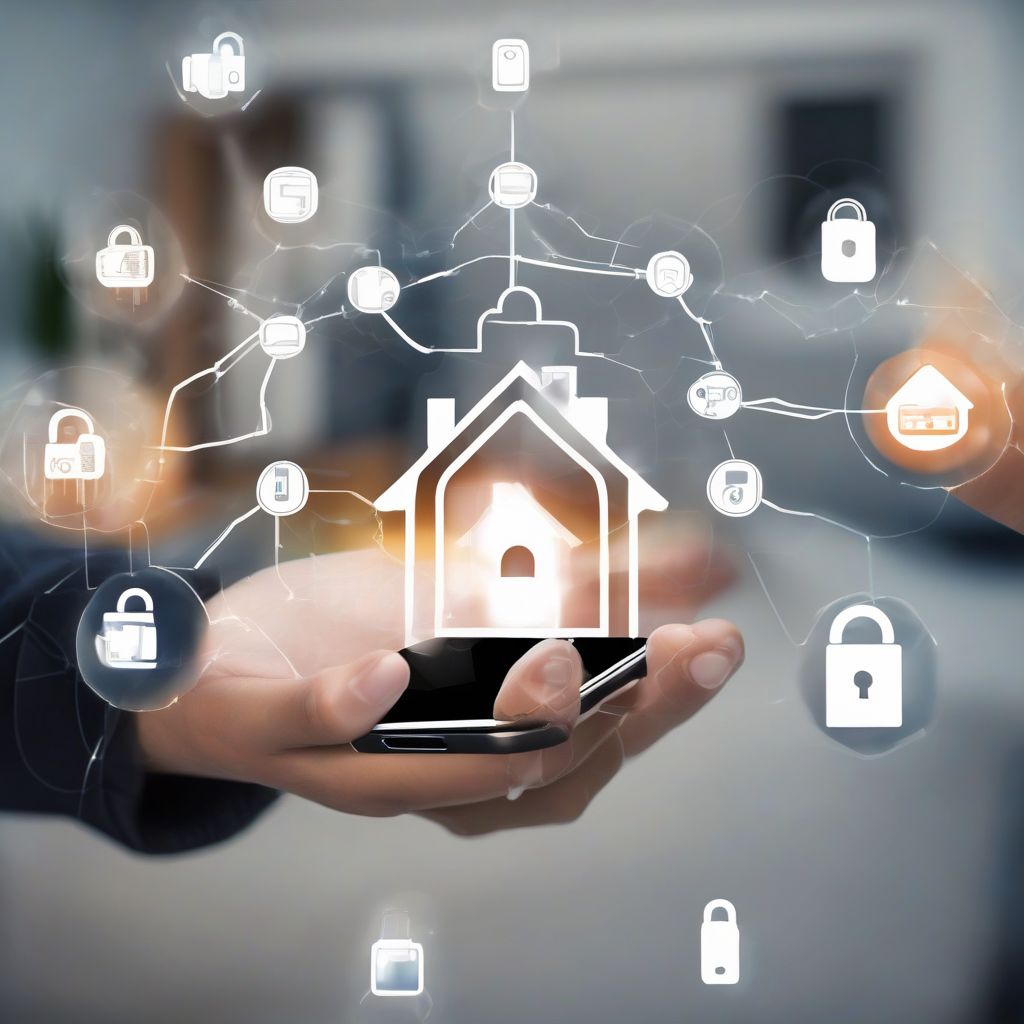Imagine this: you’re relaxing on vacation, a million miles away from home, and you can check in on your smart security system, adjust the thermostat, and even turn on the lights – all from your phone. Sounds pretty amazing, right? It is! But with the incredible convenience of a smart home comes the responsibility of ensuring your network is secure.
Just like you wouldn’t leave your front door unlocked when you’re away, you can’t afford to leave your smart home vulnerable to cyber threats. That’s why we’ve put together this comprehensive guide to help you fortify your smart home network and enjoy peace of mind knowing your connected life is protected.
Understanding the Risks: What’s at Stake?
Before we dive into the security measures, let’s take a moment to understand why securing your smart home network is crucial. Every device you connect – from smart lights and thermostats to security cameras and voice assistants – represents a potential entry point for hackers.
Here’s what’s at stake:
- Privacy Violation: Hackers could gain access to your cameras and microphones, invading your privacy and potentially recording your personal moments.
- Data Theft: Your smart devices often store sensitive information like your Wi-Fi password, home address, and even financial details, making them a lucrative target for cybercriminals.
- Home Security Breach: A compromised security system could leave your home vulnerable to physical intrusions, putting your safety and belongings at risk.
- Device Manipulation: Imagine a hacker taking control of your smart thermostat or appliances, causing discomfort, inconvenience, or even potential damage.
 Securing Smart Home
Securing Smart Home
Best Practices for an Ironclad Smart Home Network
Now that you understand the potential risks, let’s explore the actionable steps you can take to secure your smart home network:
1. Strong Passwords: Your First Line of Defense
One of the simplest yet most effective ways to protect your smart home is by using strong, unique passwords for all your devices and your Wi-Fi network.
- Ditch the Defaults: Many devices come with default passwords that are easily guessable. Change them immediately!
- Go Long and Complex: Use a combination of upper and lowercase letters, numbers, and symbols to create passwords that are at least 12 characters long.
- Don’t Repeat: Avoid using the same password for multiple devices or accounts.
- Consider a Password Manager: A password manager can generate and store complex passwords for you, so you don’t have to remember them all.
2. Enable Two-Factor Authentication (2FA) Whenever Possible
Two-factor authentication adds an extra layer of security by requiring you to provide two forms of identification before you can access your account. This typically involves entering a code sent to your phone or email in addition to your password.
3. Secure Your Wi-Fi Network Like Fort Knox
Your Wi-Fi network is the backbone of your smart home, so keeping it secure is paramount:
- Strong Encryption: Use WPA2 or WPA3 encryption, which are the most secure options available.
- Change Default SSID: Your SSID is your network’s name. Change it from the default to something unique and avoid using personal information like your name or address.
- Enable Firewall: A firewall acts as a barrier between your network and the outside world, blocking unauthorized access.
- Guest Network: Create a separate guest network for visitors. This prevents them from accessing your primary network and connected devices.
4. Regular Updates: Don’t Hit Snooze on Those Notifications
Software updates are essential for patching security vulnerabilities and keeping your devices protected from the latest threats.
- Enable Automatic Updates: Many devices allow you to enable automatic updates, so you don’t have to remember to do it manually.
- Check for Updates Regularly: If automatic updates aren’t available, make it a habit to check for and install updates for all your smart devices and your router.
5. Be Mindful of Device Permissions
When setting up new smart devices, pay attention to the permissions they request. Do they really need access to your location, contacts, or microphone? Grant only the permissions that are essential for the device to function.
6. Disable Remote Access When Not Needed
While remote access is a convenient feature, it also increases the attack surface of your smart home. Disable remote access features when you’re not using them to minimize the risk.
7. Shop Smart: Prioritize Security When Choosing Devices
Not all smart devices are created equal when it comes to security. When shopping for new gadgets:
- Research the Brand: Choose reputable brands with a strong track record of security.
- Read Reviews: Look for reviews that specifically mention security features and any reported vulnerabilities.
- Check for Updates: Make sure the device you’re buying is still supported with regular software updates.
8. Network Segmentation: Divide and Conquer
Network segmentation involves dividing your home network into smaller, isolated subnetworks. This way, if one device is compromised, the damage can be contained to that specific segment, preventing hackers from accessing your entire network.
9. Regular Audits: Check Your Defenses
Just like you wouldn’t leave your home security system unchecked, it’s essential to audit your smart home network periodically.
- Review Connected Devices: Go through your router’s settings and identify all the devices connected to your network. Remove any unfamiliar or unauthorized devices.
- Check for Default Passwords: Make sure you haven’t missed changing default passwords on any devices.
- Update Firmware: Ensure all your devices are running the latest firmware versions.
Conclusion: Enjoy the Connected Life with Peace of Mind
Securing your smart home network might seem like an overwhelming task, but by implementing these best practices, you can significantly reduce the risk of cyber threats and enjoy the convenience of a connected life with peace of mind.
Remember, a little vigilance goes a long way in protecting your digital haven. Stay informed about the latest security threats and continue to educate yourself on the best ways to keep your smart home safe.
Do you have any other tips for securing a smart home network? Share your thoughts in the comments below!
[amazon bestseller=”smart home security”]
